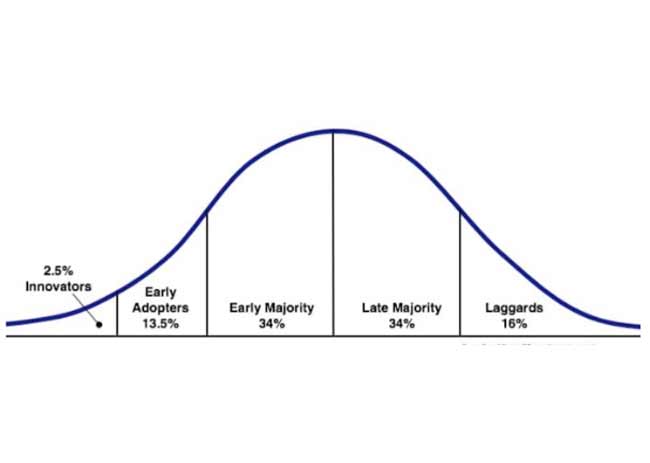April is the traditional start of the baseball season. And rightly or wrongly, many teams often feel how competitive they will be during the upcoming season will depend on their ability score runs, mainly via hitting home runs. It’s fun because I often encounter the same kind of thinking in the restaurant industry.
When attending trade events like The NAFEM Show or the upcoming National Restaurant Association Show, operators I speak with often look to hit a home run, so to speak, by finding that cutting-edge or innovative piece of equipment that will quickly save labor hours, cut capital costs or both. In reality, they might as well be looking for a unicorn. Let me explain why.
With the implementation of most cutting-edge innovations comes an adoption curve. This should make operators rethink their approach of swinging for the fences year after year. Rather, operators can opt for a step-function approach to innovation and focus on sustaining innovation versus disruptive innovation.
 Example of Typical Adoption Curve
Example of Typical Adoption Curve
A broad definition of disruptive innovation is introducing a new piece of technology or equipment that completely disrupts the status quo, hence the name. For the past few years, this has been the aim of robotic companies and artificial intelligence applications, with the latter gaining much more traction in the restaurant industry than the former.
Certain companies undoubtedly will require disruptive innovation to thrive, but sustaining innovation, or as I am referring to it as step-function, can also do an excellent job of helping companies stay in the game.
Keeping with the baseball metaphor, you can think of the step-function approach as playing small ball. By that I mean, instead of swinging for the fences, operators can strive to and string together a series of hits that lead to a bunch of runs. In this instance that means continuing to make small but smart and impactful changes that lead to game-winning results.
The reapplication of existing technology is a powerful tool. And when it comes to technology the restaurant industry is still playing catchup compared to other business segments. A great example of this is the way drive thru-related technology continues to evolve. Drive thrus have been a staple of quick-serve restaurants for more than 50 years, but the concept of paying through the drive thru has just recently made headway in transitioning from the typical cash and credit options to more automated solutions.
For example, what if drive thru operators took a page from tollway systems’ playbooks? Tollways have been collecting money from drivers for less time than the drive thru has been around and yet tollways are so far ahead technologically as they have almost completely done away with a toll-booth operator. Instead of staffing booths, tollways now use “EZ-pay” or “FL SunPass” or even “Pay by Plate” forms of payment that automates and streamlines the process as anyone who has cruised through a tollbooth without tapping their brakes will attest.
An example of the step-function approach to innovation for restaurants is to look for ways to reduce drive thru-related labor. Many quick-service restaurants have updated their prototypes to include lanes specifically for third-party delivery companies and customers who order via the restaurant’s app.
Another example of the reapplication of existing technology is the use of robots. Many concepts are experimenting with utilizing robots to deliver food orders to customers’ homes or offices. This is another example of disruptive innovation. A step-function approach would be to use robots to deliver food to cars in the drive thru or in a designated spot in the restaurant’s parking lot. The latter approach comes with less risk of theft and damage versus delivering to home. Both options begin to reduce the work requirements of physical people delivering to cars. Applying existing technology to a smaller area of focus can have a greater chance of success and allow the food orders to safely cross home, so to speak.
I can provide more examples of ways restaurants and other foodservice operators can reapply existing technology, but the moral of the story is that operators should not only be looking for disruptive innovation but also keep in mind the power behind optimizing sustaining innovation.



